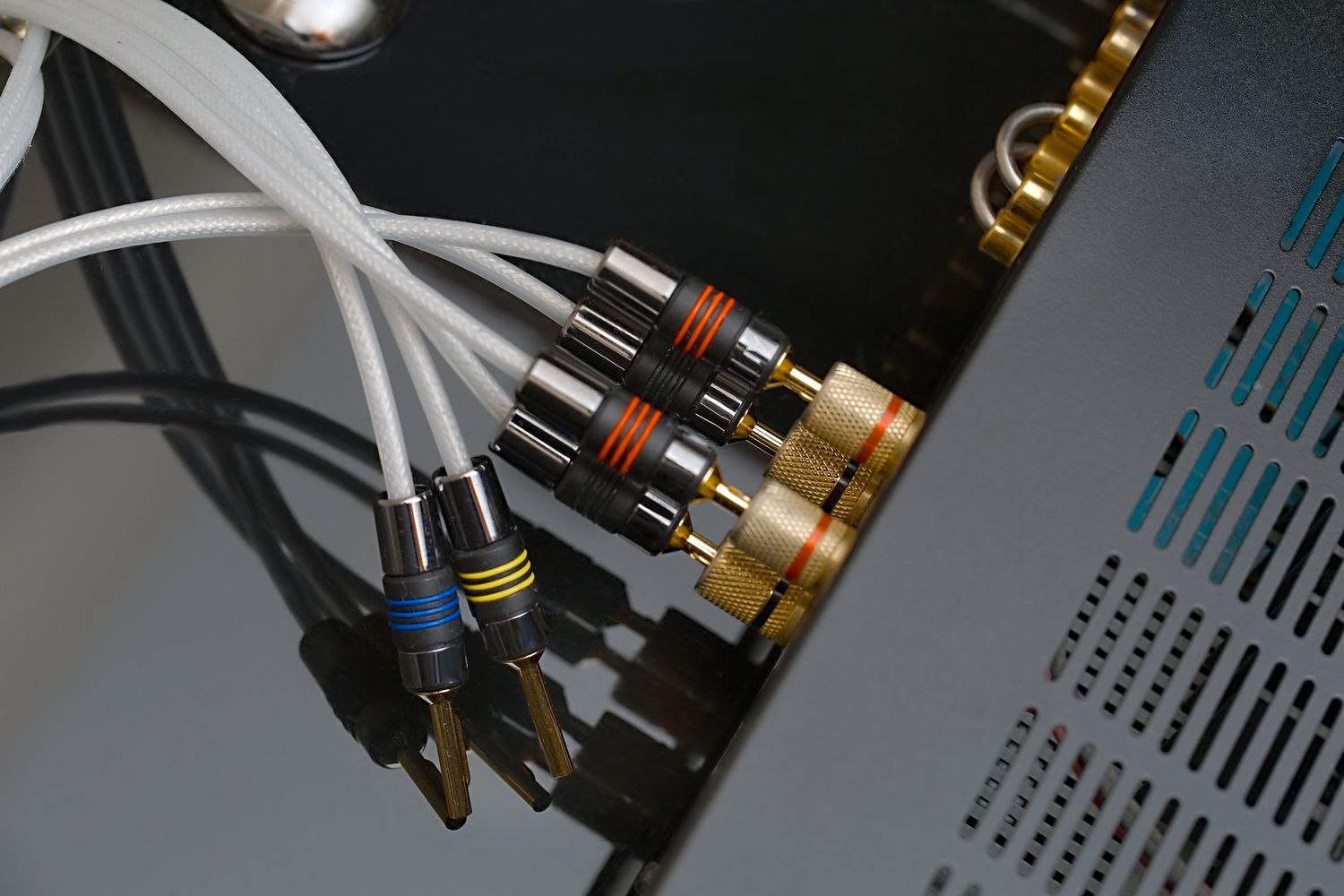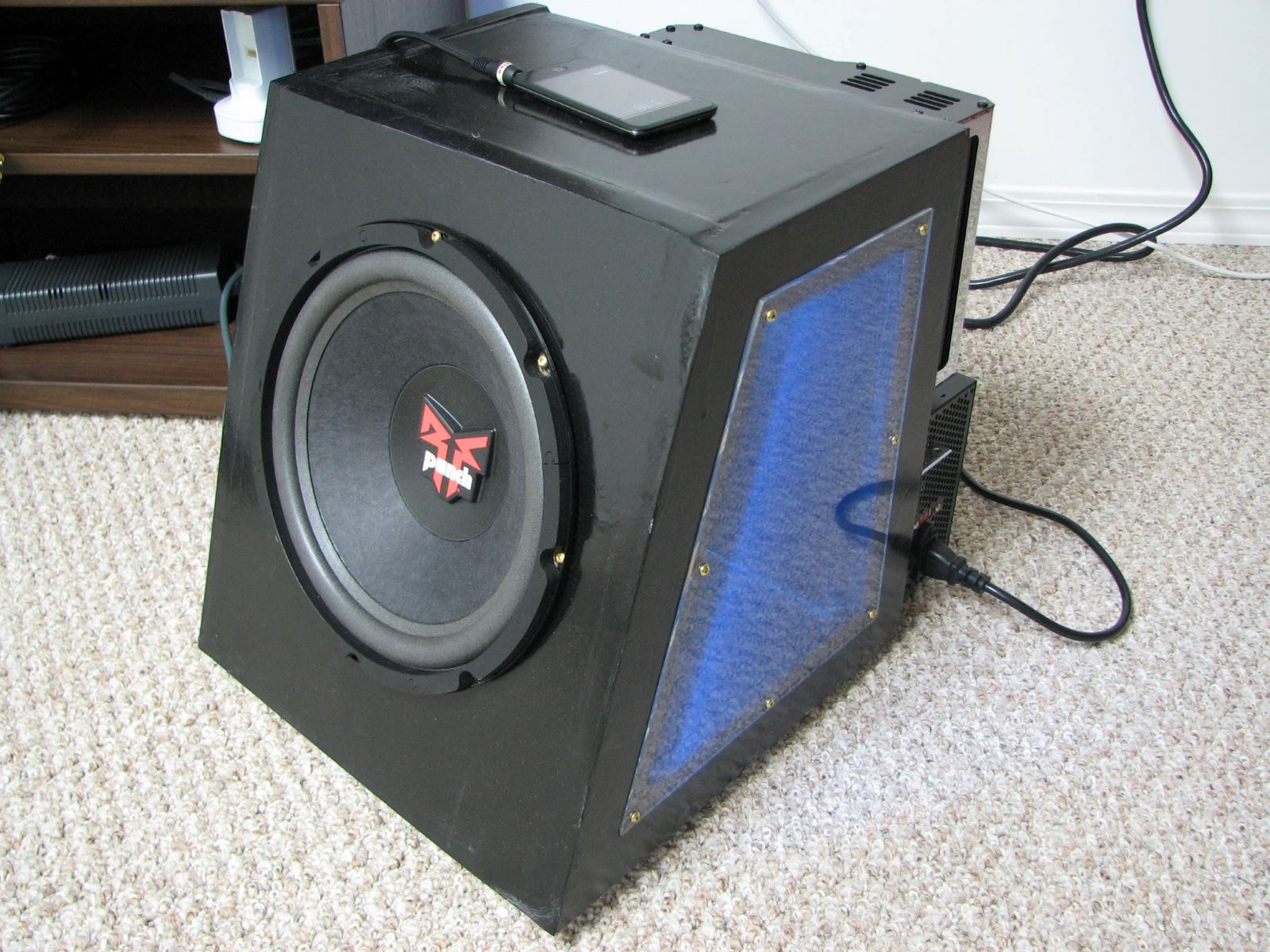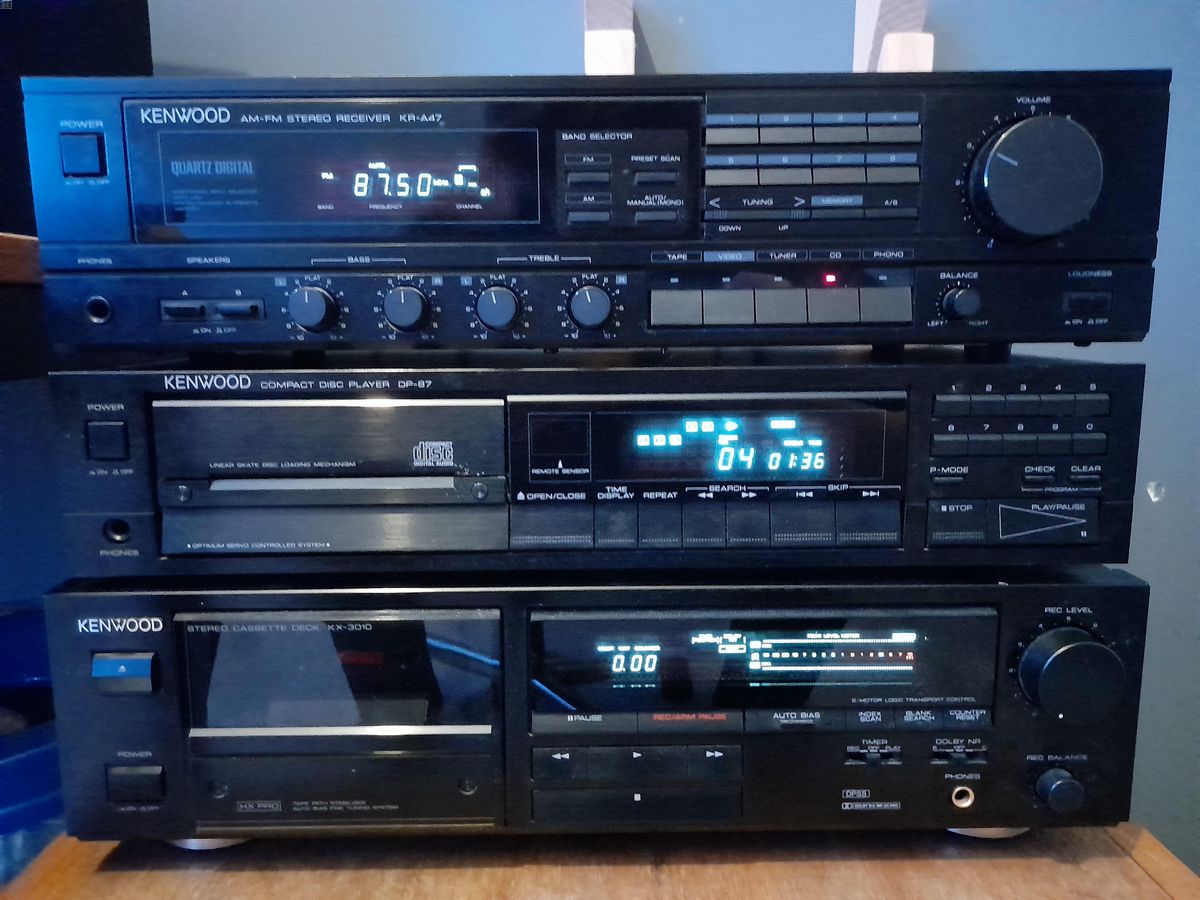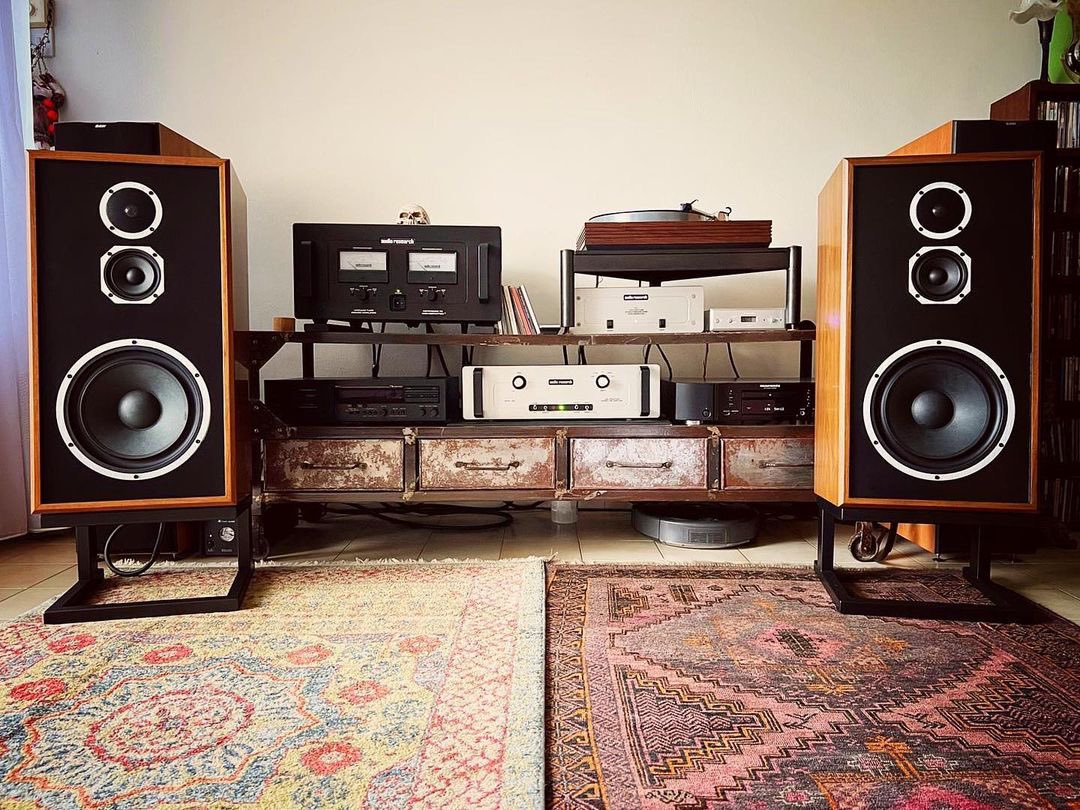Home>Devices & Equipment>Radio>How To Improve AM Radio Reception At Home
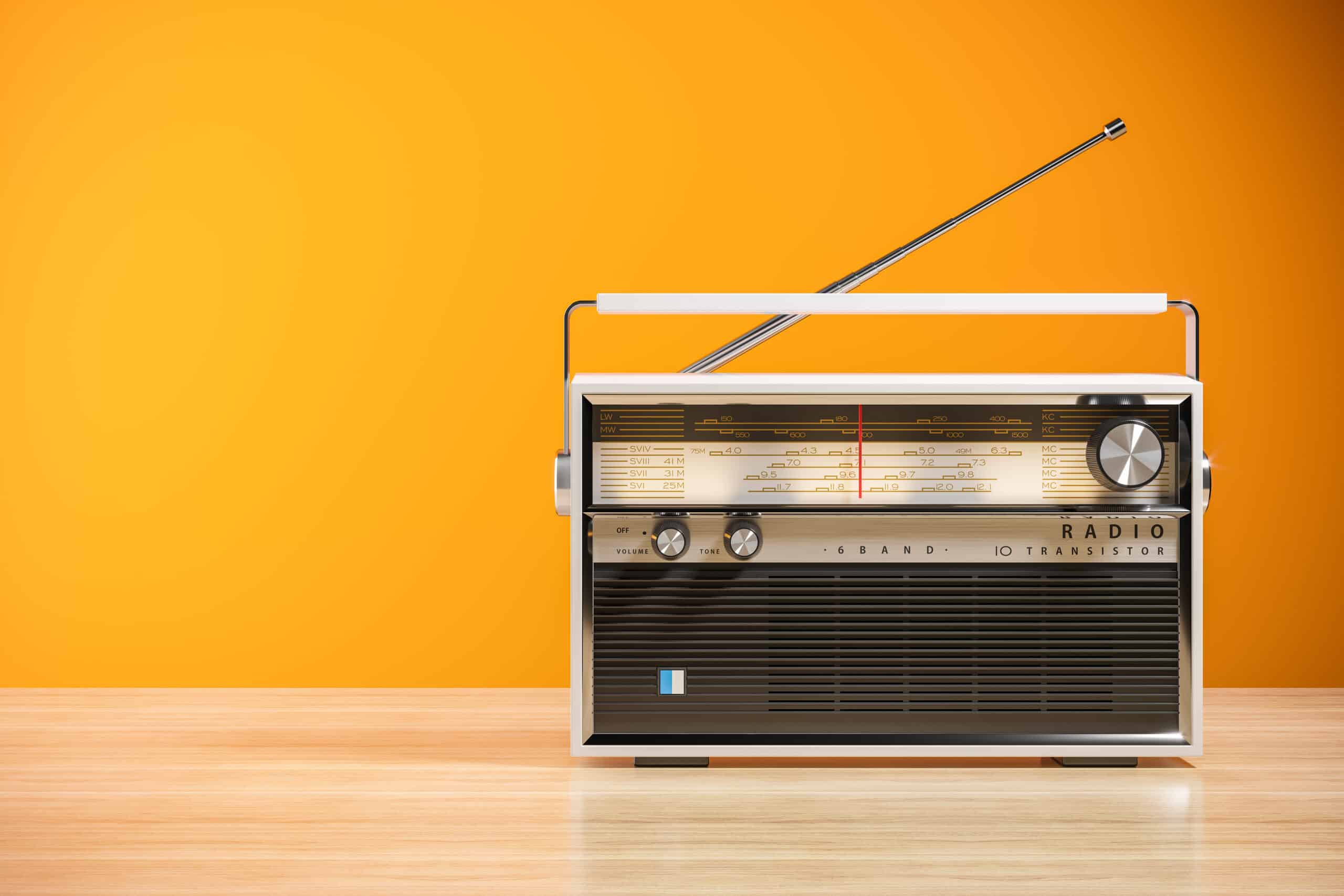

Radio
How To Improve AM Radio Reception At Home
Modified: January 22, 2024
Improve AM radio reception at home with these simple tips and tricks. Enhance your radio experience and enjoy crystal clear sound.
(Many of the links in this article redirect to a specific reviewed product. Your purchase of these products through affiliate links helps to generate commission for AudioLover.com, at no extra cost. Learn more)
Table of Contents
- Introduction
- Understanding AM Radio Reception
- Common Causes of Poor AM Radio Reception
- Tips for Improving AM Radio Reception at Home
- Positioning the Antenna
- Using an External Antenna
- Eliminating Interference Sources
- Grounding the Equipment
- Using a Signal Booster or Amplifier
- Improving Radio Receiver Performance
- Conclusion
Introduction
AM radio, or amplitude modulation radio, has been a popular medium for news, music, and entertainment for over a century. However, one common challenge faced by many radio enthusiasts is poor AM radio reception at home. The frustration of dealing with static, interference, and weak signal strength can significantly diminish the listening experience.
While FM and internet radio have gained popularity, AM radio continues to hold its own, offering a unique range of programs and a nostalgic charm. Fortunately, there are ways to improve AM radio reception and enjoy clearer, more reliable broadcasts right in the comfort of your home.
Understanding the factors that contribute to poor AM radio reception is essential in finding effective solutions. Interference from surrounding electronics, physical obstacles, distance from the broadcasting station, and even atmospheric conditions can all impact signal quality. In this article, we’ll explore common causes of poor AM radio reception and provide practical tips on how to improve it.
By implementing these suggestions, you can enhance your AM radio listening experience, whether you enjoy talk shows, sports commentary, or your favorite music genres. Let’s dive in and uncover the secrets to improving AM radio reception at home.
Understanding AM Radio Reception
Before delving into how to improve AM radio reception at home, it’s important to have a basic understanding of how AM radio works. AM radio utilizes amplitude modulation, where the audio signal is mixed with a carrier wave. The amplitude of the carrier wave is altered to represent the audio information, which is then received and decoded by the radio receiver.
Unlike FM radio, which operates in the frequency modulation range, AM radio operates in the medium frequency (MF) and longwave frequency (LW) bands. These bands are known for their ability to travel long distances, making AM radio a reliable source of information and entertainment, especially in rural areas or during emergencies.
AM radio signals can be affected by various factors that can lead to poor reception. One common issue is interference from electronic devices in your home. Appliances, computers, fluorescent lights, and even cell phones can generate electromagnetic waves that interfere with the AM radio signal. Physical obstructions like tall buildings, hills, and metal structures can also obstruct the signal path and result in weak reception.
Additionally, the quality of your radio receiver, the positioning and quality of the antenna, and the distance between your location and the broadcasting station can all influence your AM radio reception. By understanding these factors, you can take the necessary steps to improve the reception and enjoy a clear and uninterrupted radio listening experience.
Now that we have a better understanding of the basics of AM radio reception, let’s explore some common causes of poor reception and how to address them.
Common Causes of Poor AM Radio Reception
Poor AM radio reception can be attributed to several factors. Identifying the underlying causes is crucial in troubleshooting and improving the signal strength and clarity. Here are some common culprits of poor reception:
- Distance from the broadcasting station: The farther you are from the broadcasting station, the weaker the signal will be. Obstructions like buildings, mountains, and even dense foliage can further weaken the signal.
- Interference from electronic devices: Appliances, power lines, fluorescent lights, and even electronic gadgets in your home can emit electromagnetic waves that interfere with the AM radio signal, causing static and distortion.
- Physical obstructions: Tall buildings, hills, and metal structures can obstruct the path of the radio waves, leading to weak reception.
- Atmospheric conditions: Weather conditions like thunderstorms, strong winds, and electrical storms can interfere with AM radio signals and degrade reception quality.
- Lower quality radio receiver: A low-quality or outdated radio receiver may not have the best amplification and tuning capabilities, affecting signal reception.
Knowing the common causes of poor AM radio reception is the first step towards improving it. In the next section, we will provide you with actionable tips to enhance AM radio reception at home. By implementing these strategies, you can overcome the challenges posed by these factors and enjoy better quality reception for your favorite AM radio stations.
Tips for Improving AM Radio Reception at Home
If you’re experiencing poor AM radio reception at home, don’t despair. There are several effective strategies you can employ to boost the signal strength and improve the quality of your AM radio listening experience. Here are some tips to help you enhance AM radio reception at home:
- Positioning the Antenna: Start by properly positioning your radio’s built-in antenna. Experiment with different orientations, such as extending it fully, tilting it, or pointing it towards the broadcasting station. Small adjustments can make a significant difference.
- Using an External Antenna: Consider investing in an external antenna for improved reception. An external AM loop antenna or a simple wire antenna can be attached to your radio to enhance signal capture. Place it near a window, or even outdoors for better results.
- Eliminating Interference Sources: Identify and eliminate potential sources of interference in your home. Keep electronic devices, appliances, and power cords away from your radio and its antenna. Turn off or move away from sources of electromagnetic interference, such as fluorescent lights and cell phones.
- Grounding the Equipment: Proper grounding can help reduce interference and improve reception. Ensure that your radio and antenna are properly grounded, especially if you’re using an external antenna.
- Using a Signal Booster or Amplifier: Signal boosters or amplifiers can help amplify weak signals and improve reception. These devices can be connected between the antenna and the radio receiver, boosting the signal strength for clearer reception.
- Improving Radio Receiver Performance: Consider upgrading your radio receiver if you’re using an outdated or low-quality device. Look for a receiver with better tuning capabilities and a higher signal-to-noise ratio for improved reception.
By implementing these tips, you can significantly enhance AM radio reception at home. Experiment with different techniques and combinations to find the best configuration that works for your specific location and radio setup.
Remember to regularly scan and retune your radio to find the optimal AM frequencies for your desired stations. Additionally, staying up to date with local AM broadcasting stations and their locations can help you fine-tune your antenna positioning and improve reception further.
Now that you have a range of strategies to tackle poor AM radio reception, it’s time to put them into action and enjoy crystal-clear broadcasts right in the comfort of your home.
Positioning the Antenna
One of the fundamental steps in improving AM radio reception at home is correctly positioning the antenna. The antenna is responsible for capturing the radio waves and sending them to your radio receiver. Here are some tips to optimize the positioning of your antenna:
- Extend the antenna fully: Most radios have a telescopic antenna that can be extended. Fully extend the antenna to maximize its reception capabilities.
- Tilt the antenna: Experiment with tilting the antenna at different angles. Sometimes, a slight tilt towards the broadcasting station can enhance the signal strength.
- Point the antenna: Try pointing the extended antenna directly towards the broadcasting station. This can help align the antenna with the radio waves and improve reception.
Remember, finding the optimal position for your antenna may require some trial and error. Don’t be afraid to adjust and experiment with different positions until you find the one that provides the best reception.
In addition to the built-in antenna on your radio, you can also consider using an external antenna for even better results.
- External AM Loop Antenna: An external AM loop antenna can provide improved reception. These antennas consist of a loop wire that can be placed near your radio or mounted on a wall. Experiment with different positions and orientations to find the best reception.
- Simple Wire Antenna: If you don’t have an external AM loop antenna, a simple wire antenna can also be effective. Attach a long wire to the AM antenna connection on your radio and position it near a window or, ideally, outdoors for better signal capture.
Remember to adjust the positioning of your antenna whenever you change locations or if you notice a decrease in reception quality. By optimizing the positioning of your antenna, you can maximize AM radio reception and enjoy clearer audio without interference.
Using an External Antenna
If you’re looking to further improve AM radio reception at home, considering the use of an external antenna can be a game-changer. An external antenna offers enhanced signal capture, especially in areas with weak AM radio signals. Here are a few options to explore:
- External AM Loop Antenna: An external AM loop antenna can significantly boost reception. These antennas consist of a loop wire wound around a frame or contained within a plastic housing. They are designed to capture AM radio frequencies effectively. Place the antenna near a window or a location with a clear line of sight to the broadcasting station for optimal results.
- Wire Antenna: If you prefer a DIY approach, a simple wire antenna can be an effective and economical solution. Attach a long wire to the AM antenna connection on your radio, and extend it as far as possible. Consider positioning the wire outdoors or in a high and unobstructed location like an attic for better signal reception.
- Directional Antenna: In areas with multiple broadcasting stations, a directional antenna can improve reception by focusing on a specific direction. These antennas have a built-in mechanism that allows you to adjust their orientation to target a particular broadcasting station. By narrowing the antenna’s reception pattern, you can reduce interference and capture a stronger signal.
When installing an external antenna, ensure that it is connected securely to your radio’s AM antenna input. Experiment with different positions and orientations to find the optimal setup for your specific location and radio reception needs.
Keep in mind that external antennas may require some additional setup and adjustment, but they can significantly enhance AM radio reception at home. Take advantage of their improved signal capture capabilities to enjoy clearer and more reliable broadcasts of your favorite AM radio stations.
Eliminating Interference Sources
Interference from various electronic devices and household appliances is a common culprit behind poor AM radio reception. By identifying and eliminating these sources of interference, you can greatly improve the quality of your AM radio signals. Here are some steps you can take to minimize interference:
- Keep devices away from your radio: Move electronic devices such as televisions, computers, and cell phones away from your radio. These devices emit electromagnetic waves that can interfere with the AM radio signal.
- Power off or unplug devices: Turn off or unplug devices that are not in use. This includes appliances like microwave ovens, fluorescent lights, and even power tools. By reducing the number of active electronic devices, you can minimize potential sources of interference.
- Use shielded cables: When connecting external devices to your radio, use shielded cables. These cables have a protective layer that helps reduce the interference caused by electromagnetic waves.
- Use a power conditioner: Consider using a power conditioner or surge protector to filter out electrical noise from the power supply. This can help reduce interference and improve overall signal quality.
- Isolate power cords: Separate power cords from data cables, audio cables, and antenna cables. These cables can pick up electrical noise from nearby power cords, leading to interference.
- Avoid nearby power lines: If possible, position your radio away from power lines or overhead cables. These high-voltage lines can introduce interference into the radio signal.
By taking these steps to eliminate interference sources, you can enhance the clarity and strength of your AM radio reception. Regularly reassess your surroundings for new sources of interference and make adjustments as necessary to maintain optimal reception quality.
Keep in mind that minimizing interference is an ongoing process as new electronic devices and appliances enter our homes. Stay vigilant and proactive in identifying and addressing potential interference sources to enjoy uninterrupted AM radio listening.
Grounding the Equipment
Proper grounding of your radio equipment is crucial for reducing interference and optimizing AM radio reception. Grounding helps redirect electrical noise and unwanted signals away from your radio, improving the overall signal quality. Here are some steps to effectively ground your equipment:
- Connect to a proper ground: Ensure that your radio and antenna components are properly grounded to a suitable grounding system. This can be achieved by connecting them to a dedicated grounding rod or a grounded electrical outlet. Consult a professional electrician if you are unsure about the proper grounding methods.
- Use a grounding wire: Run a grounding wire from the grounding connection on your radio to the grounding point. It is recommended to use a larger gauge wire for grounding to provide better conductivity.
- Ensure a good connection: Make sure that the grounding connections are well-secured and tightened to ensure a solid electrical connection.
- Separate grounds for different devices: If you have multiple radio equipment or antennas, it is advisable to use separate grounding wires for each device. This helps prevent interference between different components.
- Use grounding loop isolators: In some cases, there may be ground loops that can introduce unwanted noise into the system. Consider using grounding loop isolators to eliminate these loops and improve signal quality.
By properly grounding your equipment, you can minimize interference caused by electrical noise and improve the overall performance of your AM radio reception. Remember to periodically inspect and maintain your grounding system to ensure its effectiveness.
If you are unsure about grounding procedures or need assistance, consult a professional electrician to ensure the proper installation and grounding of your radio equipment.
Using a Signal Booster or Amplifier
If you’re dealing with weak AM radio signals, using a signal booster or amplifier can significantly enhance your reception. These devices work by amplifying the incoming signal, boosting its strength and improving the overall quality. Here’s how you can make use of a signal booster or amplifier:
- Choose the right device: Look for a signal booster or amplifier specifically designed for AM radio frequencies. These devices are often referred to as AM radio boosters or AM antennas with built-in amplifiers.
- Position the booster or amplifier: Place the signal booster or amplifier between your radio and the antenna. Follow the manufacturer’s instructions for correct installation and positioning.
- Adjust the settings: Some signal boosters or amplifiers offer adjustable settings for fine-tuning the amplification level. Experiment with different settings to find the optimal balance between signal strength and minimal interference.
- Consider a powered amplifier: If you have a large property or are located far away from the broadcasting station, a powered amplifier may be necessary. These devices require an additional power source, typically through a power adapter or batteries, to provide an extra signal boost.
- Be cautious of over-amplification: While amplifying the signal is beneficial, be cautious not to over-amplify it. Over-amplification can lead to distortion and poor reception quality. Find the right balance to achieve optimal signal enhancement.
Using a signal booster or amplifier can be a powerful tool to overcome weak AM radio signals. It can help increase reception range and minimize the effects of noise and interference. Experiment with different configurations and settings to find the best results for your specific location.
Remember that signal boosters and amplifiers are not magic fixes and may not completely eliminate reception issues caused by physical obstacles or extreme distances from broadcasting stations. However, they can significantly improve reception and enhance your listening experience.
Improving Radio Receiver Performance
Another important aspect of improving AM radio reception at home is optimizing the performance of your radio receiver. Upgrading to a higher-quality receiver or making adjustments to your existing receiver can greatly enhance signal reception and overall experience. Here are some tips to improve radio receiver performance:
- Upgrade your radio: If you’re using an outdated or low-quality radio receiver, consider investing in a higher-quality model. Look for a receiver that offers better tuning capabilities, sensitivity, and a higher signal-to-noise ratio. A quality receiver can make a significant difference in your AM radio reception.
- Scan for optimal frequencies: Periodically scan and retune your radio to find the optimal frequencies for your desired AM stations. The signal strength of different stations can vary, so scanning can help you identify the strongest signals and improve reception.
- Adjust the RF gain control: Some receivers have an RF gain control that allows you to adjust the sensitivity of the receiver. Experiment with different settings to find the balance between sensitivity and minimizing noise and interference.
- Use an outdoor antenna: If possible, consider installing an outdoor antenna specifically designed for AM radio reception. Outdoor antennas can provide better signal capture and reduce interference from household electronics.
- Upgrade the internal components: For advanced users, upgrading the internal components of your radio receiver, such as the capacitors or filters, can improve performance. Consult with a professional or experienced technician for guidance.
Additionally, it’s essential to keep your radio receiver well-maintained by cleaning the contacts and ensuring proper connections. Dust and debris can impact the performance of the receiver, so regular maintenance is recommended.
By focusing on improving the performance of your radio receiver, you can maximize the potential of your AM radio reception and enjoy clear and uninterrupted broadcasts.
Conclusion
Poor AM radio reception at home can be frustrating, but with the right techniques, you can significantly improve the quality of your radio listening experience. By understanding the factors that impact AM radio reception, you can implement the following strategies:
- Positioning the antenna or using an external antenna to optimize signal capture.
- Eliminating interference sources by keeping electronic devices away from the radio and reducing electrical noise.
- Effectively grounding your equipment to minimize interference and redirect unwanted signals.
- Using a signal booster or amplifier to enhance weak signals and amplify reception.
- Improving radio receiver performance by upgrading to a higher-quality receiver or adjusting settings.
Remember that each home and location might require specific adjustments and experimentation to achieve the best reception results. Regularly scan for optimal frequencies and adapt to any changes in your environment.
By implementing these strategies and staying proactive about maintaining your equipment, you can enjoy clearer, more reliable AM radio reception at home and immerse yourself in the diverse programs and broadcasts that AM radio has to offer.
So, whether you’re a fan of news, talk shows, sports, or music, apply these tips and make the most out of your AM radio listening experience.

